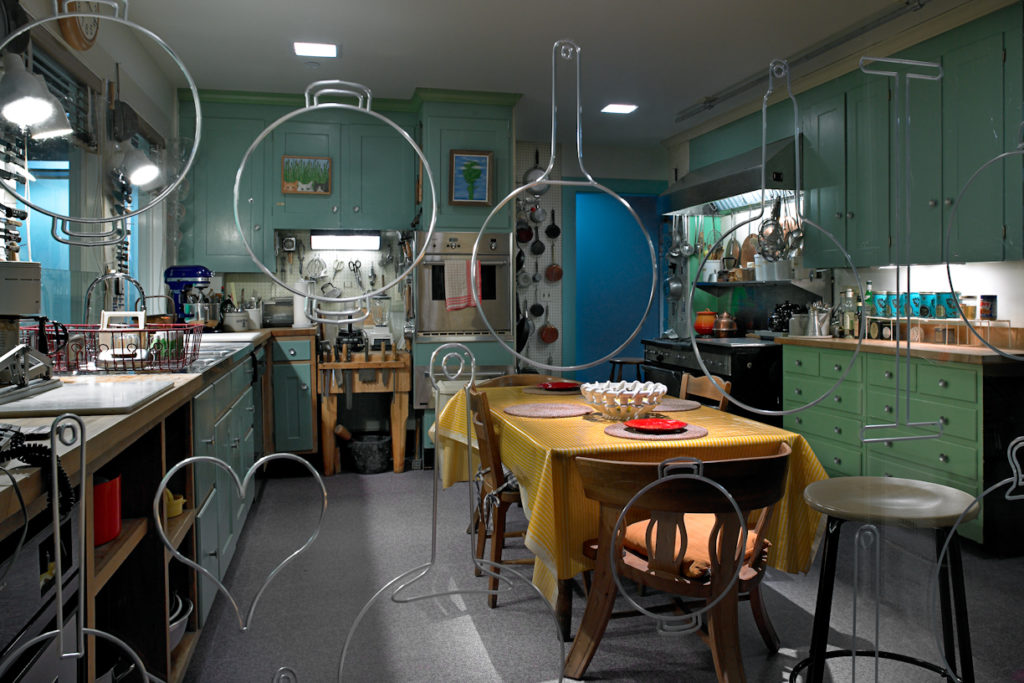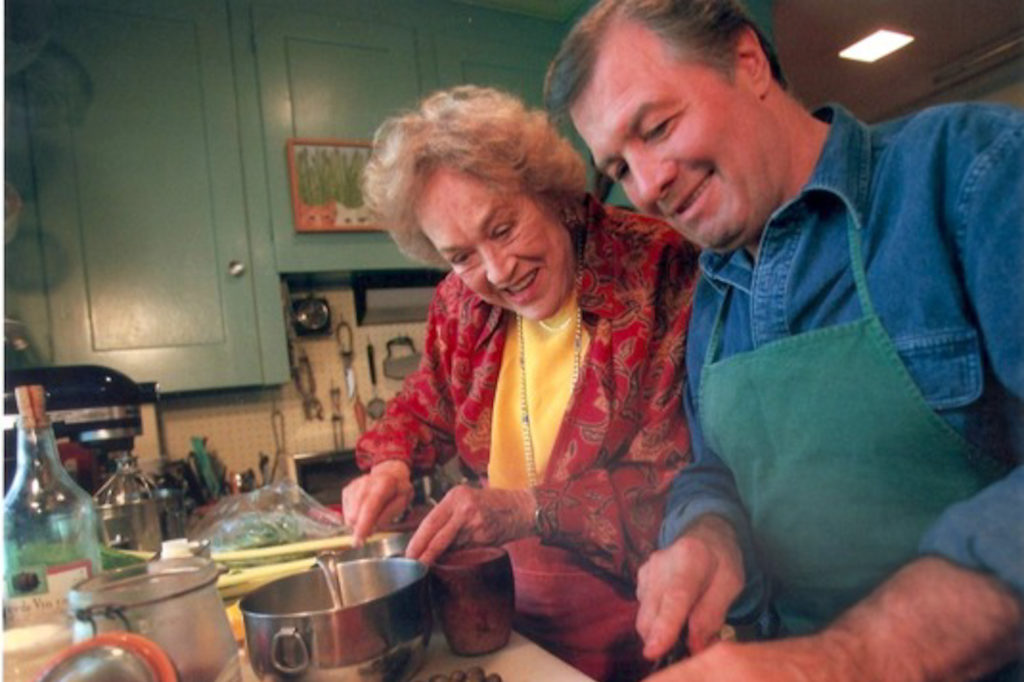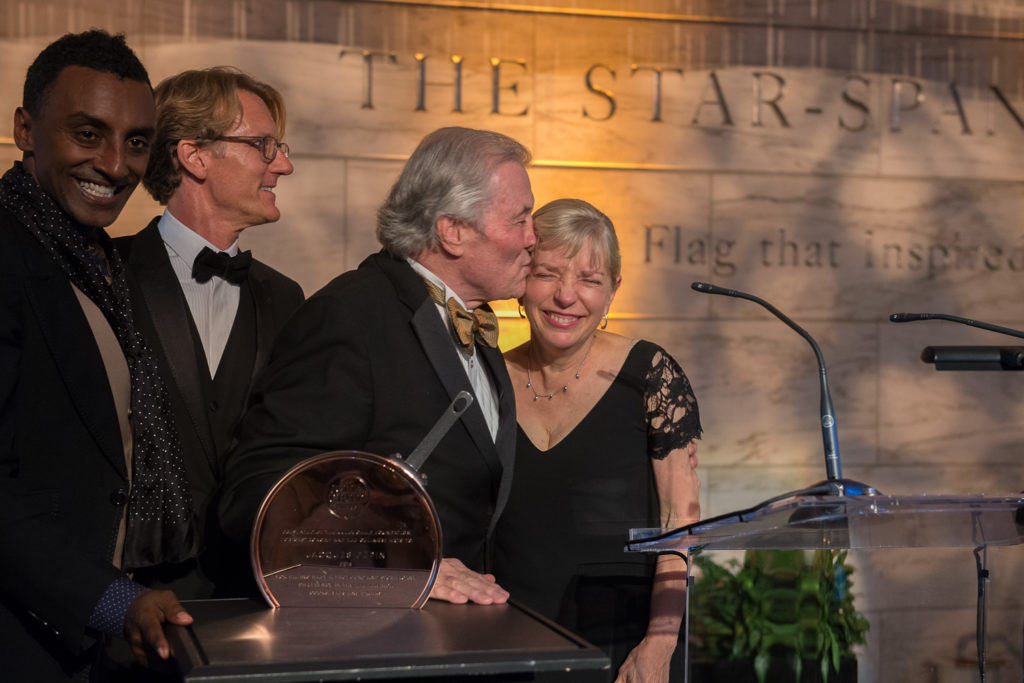
When you visit the Smithsonian, you see Julia Child’s kitchen literally enshrined. It is surrounded by plexiglass, but you can see all of it and even “step inside” at places, while the kitchen itself is surrounded by videos of Julia. You get a sense of the real Julia, while you are also awed to be in the actual space inhabited by the First Lady of Food Television. Her seminal series “The French Chef” has just been re-released on the online TV site Twitch – bringing Julia once again into the public spotlight.
I was reminded of the cultural status of chefs at the Smithsonian’s Food History Gala. It was a public event to present the first ever Julia Child Award to Jacques Pépin. Taking place in the grand hall of the Smithsonian’s American History Museum, the location made it clear where chefs stand today in the pantheon of American greats. They stand right next to “The Star-Spangled Banner.” Literally.
Todd Schulkin, executive director of the Julia Child Foundation, felt the space was appropriate. “It was very meaningful to be in the flag hall,” he said “under the image of ‘The Star-Spangled Banner.’ ”

Marcus Samuelsson, author of “Yes, Chef,” reminded the distinguished guests that “being a chef was an anonymous labor for a long time.” Their high-flying cultural status is newfound. Even the evening’s celebrant, Jacques Pépin, spent the early part of his career as the corporate chef for Howard Johnson’s.
And it’s not just food stars, but food itself that has become a cultural touchstone. The Smithsonian’s Food History Weekend, kicked off by the gala, was followed up with two more days of events and workshops that showcased innovation in American food culture. And the conversation didn’t stop with the weekend. The Smithsonian has embraced food history with the American Food History Project. They feature monthly events that place food culture on the same level with such celebrated icons as Abraham Lincoln’s stovepipe hat and Dorothy’s Ruby Slippers.
But there was a wistfulness underpinning the gala dinner. Many of the speakers of the evening – including the celebrated Chef Pépin – remarked on the strangeness of being cultural superstars. They all seemed to feel a sense of concern: being “enshrined” can also mean losing touch. A classic artifact like Julia’s Kitchen must be preserved by plexiglass. But a chef shouldn’t be. Superstars can find themselves living in a bubble, and it takes work to avoid this fate.

Most of the pantheon at the gala seemed to be deeply aware of this. Sara Moulton pointed out that Julia’s real métier was television – the great leveler. In Sara’s first job in television, Julia told her: “smile for the camera.” Now on her own television series, Sara keeps that smile and counsels her guests to “Smile constantly and for no particular reason.” It’s not an act – it’s an acknowledgment of the reality of the joy of food. While setting up a food demo on a set, Julia Child said to Sara: “Aren’t we having fun?” Sara had to think about it, then the truth dawned: “Yes,’ she said, “Yes, we are!”
It’s the sense of fun, the sheer joy of preparing food, which made Julia Child an icon – the first food superstar of our culture. The joyous face of Jacques Pépin as he accepted the Julia Child Award made it clear that he is a fitting inheritor.
I got a sudden shock of the humanity of our great chefs on the last day of the Smithsonian’s Food History Weekend. I was leaving the American History museum when I ran into Anne Willan and Todd Schulkin coming in the doors. Anne, of course, is the founder of the iconic cooking school École de Cuisine La Varenne and author of “La Varenne Practique.” I was delighted to see them, and Anne explained she was coming to the Smithsonian to experience Julia’s Kitchen. “I’ve never seen it,” she said. Then she stopped with a frown, “Well, I have, of course, when I cooked in it with Julia. But I’ve never seen it…” She stopped again. “I’ve never seen it behind glass,” she finished.
The Smithsonian and the Julia Child Foundation are well aware of the danger of putting something behind glass. “Enshrining” both preserves — and distances. So on the same floor as Julia’s Kitchen, children can now interact with a miniature version of Julia’s Kitchen at the “Wegmans Wonderplace” exhibition, allowing them to grab pans from the famous pegboard wall and pull things out of the iconic but miniaturized refrigerator. And events like Food History Weekends and awards for populists like Jacques Pépin can keep food culture personal, intimate and connected.
